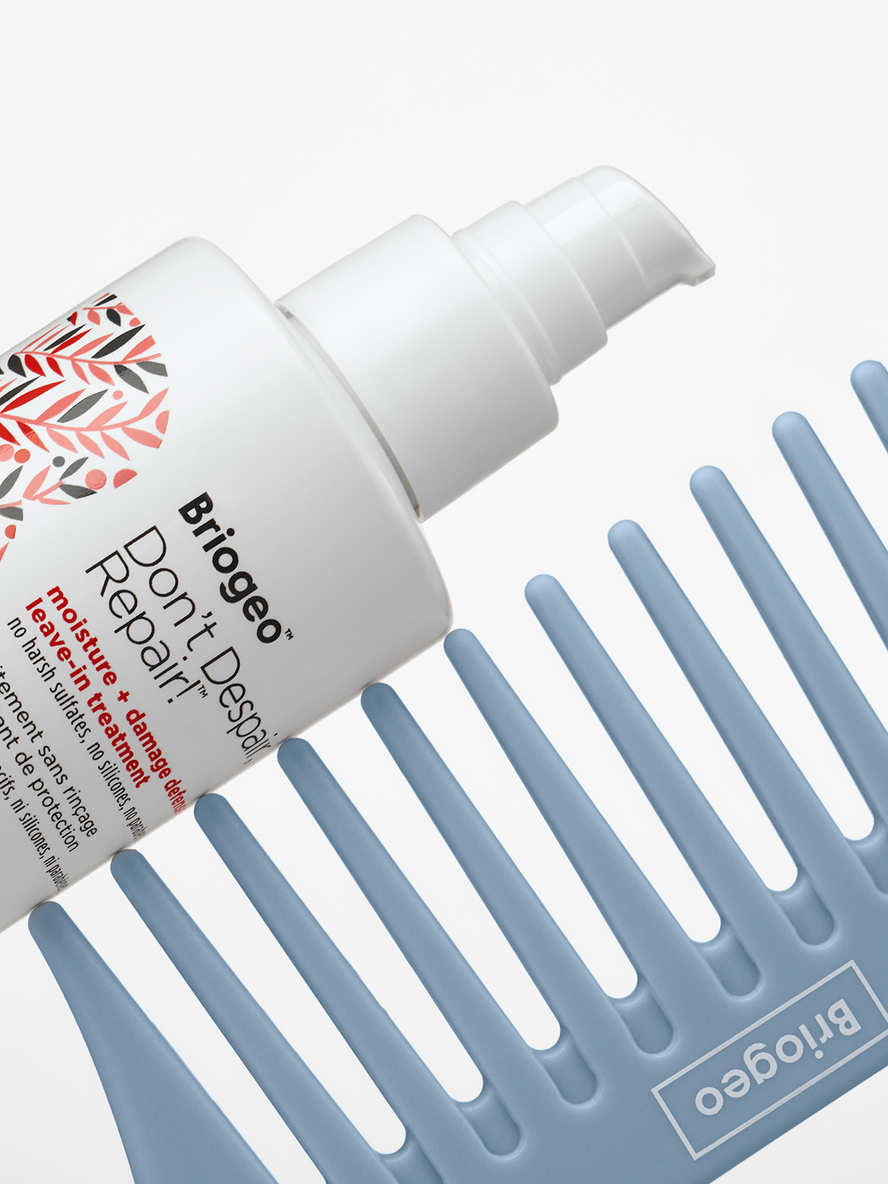If you’ve ever aspired to longer hair, you know that pesky split ends can get in the way of growth. Today we’re diving into all things split ends: what they are, what causes them, and how to prevent them!
So, what are split ends anyway?
Let’s go back to science class for a moment. The hair shaft is made up of several layers. The outermost layer, called the “cuticle,” lays like shingles on a roof, sealing the hair shaft to keep environmental aggressors out and moisture and essential nutrients in. The innermost layer, or the “cortex,” is where all of those good ingredients are housed, and it’s where all of your hair’s elasticity, strength, and shine live.

When hair becomes weakened, whether through damage or dehydration, the structural integrity of the hair shaft gets compromised, making it more prone to breakage. The cuticle lifts, which allows the keratin proteins that make up the structure of the hair to escape, leaving the hair shaft brittle and weak. Split ends are literally the ends of your hair splitting off into different directions because the bonds that hold them together are depleted.
What causes them?
Unfortunately, split ends have a variety of causes - some chemical, some mechanical, and some environmental. Some of the most common causes include:
Aggressive washing: shampooing hair too vigorously, too often, or using drying, sulfate-based cleansers can weaken hair fibers.
Inadequate conditioning: skipping conditioners and deep conditioning or choosing a conditioner that’s too lightweight for your hair texture can all contribute to dehydration.
Color and chemical treatments: these processes require lifting of the hair cuticle to change the chemical structure of the hair, which can lead to increased breakage and weaker hair.
Increased friction: roughly drying your hair with a terry cloth towel, not protecting your hair while you sleep, and brushing your hair too often or too vigorously can damage your strands.
UV rays: just like our skin, our hair needs protection from the sun, as UV rays can lift the hair's cuticle and cause damage and dehydration.
How do I prevent split ends?
Just like there are a variety of causes, there are many ways to prevent split ends from happening:
Wash gently: switch to sulfate-free cleansers and wash hair gently, focusing on the root area and letting the shampoo suds cleanse the lengths of your hair as you rinse.
Condition well: use a conditioner every time you shampoo and incorporate a deep conditioner into your routine once a week to replenish moisture and strength.
Color hair carefully: Prep hair properly for color and chemical treatments and incorporate the proper aftercare post-treatments as well. Treating hair properly before and after your appointments can go a long way to preventing any damage from these harsher processes.
Handle with care: switch to a microfiber towel when drying hair - these are easier on your strands and more efficient at absorbing water to cut down on drying time. Always protect your hair at night - cotton pillowcases absorb a ton of moisture and can dehydrate hair at night. A silk bonnet, scarf, and/or pillowcase can work wonders for keeping hair hydrated and protected while you sleep.
Protect your tresses: a good UV protection spray is a must-have, especially during the winter months!
Is there a way to fix split ends?
While the only permanent way to get rid of split ends is to get a trim, our new Don’t Despair, Repair! Moisture + Damage Defense Leave-In Treatment allows you to prolong the time between haircuts (perfect if you’re trying to grow your hair out) by visibly sealing 100% of split ends after two uses. Infused with biomimetic lipids, this easy-to-use leave-in treatment strengthens and repairs dry, damaged hair with no downtime so you can say see-ya to split ends!



